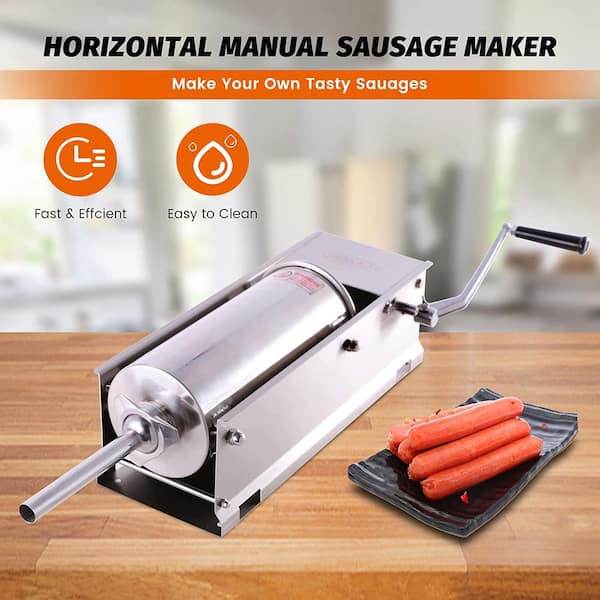As a sausage enthusiast, mastering the art of sausage making is essential for creating expert-quality sausages. A good sausage stuffing tool is crucial for achieving the perfect balance of flavor, texture, and presentation. However, making sausages is not just about filling casings with meat; it requires a deep understanding of the process and the right techniques. This article explores advanced sausage making techniques that will elevate your skills to the next level.
Introduction of Sausage Making
Achieving expert results in sausage making involves more than just using a sausage stuffer. It requires precision, the right equipment, and a thorough understanding of the process. This guide will cover advanced techniques, from casing preparation to the final cooking steps, to help you create exceptional sausages.
Proper Casing Preparation of Sausage Making
Proper casing preparation is vital for preventing contamination and ensuring even stuffing. To prepare the casing:
- Soak the Casing: Soak the casing in cold water for at least 30 minutes to rehydrate and prevent shrinking during stuffing.
- Rinse Thoroughly: Rinse the casing under cold running water to remove excess salt and impurities.
Mastering the Stuffing Process of Sausage Making
Successful sausage making requires the right amount of pressure and a consistent, controlled approach:
- Start with Gentle Pressure: Begin with gentle pressure and gradually increase as needed to prevent bursting and ensure even filling.
- Fill Slowly and Evenly: Maintain a consistent pace to avoid air pockets and achieve smooth, even sausages.
Choosing the Right Stuffing Tool before Sausage Making
Selecting the appropriate stuffing tool is crucial for effective sausage making:
- Consider the Type of Sausage: Choose a tool that suits the meat and casing you are using.
- Manual vs. Electric: Decide between manual and electric models based on the level of control you need and the type of sausage you are making.
Using the Right Meat and Seasonings
The choice of meat and seasonings significantly impacts the flavor and texture of your sausages:
- Select High-Quality Meat: Choose fresh, high-quality meat such as pork, beef, chicken, or turkey, depending on the sausage type and your preferences.
- Balance the Seasonings: Use seasonings like salt, pepper, garlic, and paprika to achieve the desired flavor profile.
Cooking the Sausage Properly
Proper cooking is essential to bring out the full flavor and texture of the sausage:
- Choose the Cooking Method: Select the appropriate method, such as grilling, pan-frying, slow cooking, or baking, based on the type of sausage and your preferences.
- Ensure Food Safety: Cook the sausage to the recommended internal temperature to ensure it is safe to eat.
Conclusion of Sausage Making
Mastering sausage making requires the right tools, techniques, and ingredients. By following the advanced techniques outlined in this article, you can create expert-quality sausages that are sure to impress. Always use clean and dry casings, fill them slowly and evenly, and cook the sausages properly to enhance their flavor and texture. With practice and patience, you will achieve exceptional results.
Summary FAQ of Sausage Making
Q: How should I prepare sausage making?
A: Soak the casings in cold water for at least 30 minutes to rehydrate them and rinse under cold running water to remove excess salt and impurities.
Q: What is the key to successful sausage stuffing?
A: Start with gentle pressure, gradually increase as needed, and fill the casing slowly and evenly to prevent bursting and ensure smooth, even sausages.
Q: How do I choose the right sausage stuffing tool?
A: Consider the type of sausage you are making, and choose between manual and electric models based on the level of control you need.
Q: What meat and seasonings should I use for sausages?
A: Select high-quality meat such as pork, beef, chicken, or turkey, and balance the seasonings with ingredients like salt, pepper, garlic, and paprika.
Q: What is the best way to cook sausages?
A: Choose the cooking method based on the sausage type and your preferences, such as grilling, pan-frying, slow cooking, or baking, and ensure the sausages reach the recommended internal temperature for food safety.

